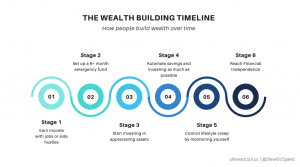
In the fast-paced world of technology, businesses must always be prepared for the future. This includes having a robust exit strategy and succession plan in place to ensure a smooth transition when the time comes. Whether it’s due to retirement, a merger, or unforeseen circumstances, a well-executed exit strategy is key to preserving the legacy of a tech company and its continued success.
Understanding Exit Strategies
An exit strategy is a pre-planned approach that outlines how and when a tech company’s owner or top executives will exit the business. It is a crucial element of long-term planning as it helps to maximize value, minimize risk, and satisfy the needs of all stakeholders involved.
There are several common types of exit strategies, each with its own benefits and considerations:
1. Initial Public Offering (IPO)
An IPO involves offering shares of a privately held tech company to the public for the first time. This exit strategy can provide significant financial gains and increased liquidity for the company’s owners. However, it requires careful preparation, compliance with regulations, and substantial financial resources to cover associated costs.
2. Acquisition or Merger
Selling the tech company to another business is a popular exit strategy. It usually involves negotiating the terms of the acquisition or merger, ensuring it aligns with the long-term goals and values of the existing company. By joining forces with a larger organization or a competitor, the tech company can tap into additional resources and expertise, expanding its reach and potential for growth.
3. Management Buyout
In a management buyout, the existing management team purchases the business from the founder or chief executive officer. This strategy allows for continuity and a smooth transition, as the management team is already familiar with the company’s operations, culture, and values. It can be an attractive option when the founder is retiring or looking to move on to other ventures.
The Importance of Succession Planning
A well-designed succession plan is an integral part of any exit strategy. Succession planning focuses on identifying and developing future leaders within the organization and ensuring a seamless leadership transition. It involves mapping out key positions, identifying potential successors, and creating development plans to prepare them for their new roles.
Here are some essential steps in effective succession planning:
1. Identifying Key Roles
Firstly, a tech company must identify critical leadership positions within the organization. These key roles may include CEO, CFO, CTO, and other executive positions. Understanding the skills, experience, and qualities required for each role is crucial in selecting suitable successors.
2. Assessing and Developing Potential Successors
Next, it is essential to evaluate the potential successors for each key role. This assessment should be based on their performance, leadership abilities, aptitude, and alignment with the company’s vision. Once suitable candidates are identified, they should be provided with mentoring, training, and development opportunities to prepare them for future leadership responsibilities.
3. Creating a Transition Plan
A transition plan outlines the timeline for transferring leadership responsibilities from the current executives to their successors. This plan must include clear communication strategies, training and knowledge transfer processes, and contingencies for unexpected events. Careful attention to detail in the transition plan is vital to ensure continuity and minimize disruption during the leadership transition.
Benefits of Exit Strategies and Succession Planning
Implementing thorough exit strategies and succession planning offers numerous benefits to tech companies:
1. Protection of Company Value
An effective exit strategy protects the value of a tech company throughout the transition process. It ensures that the company’s assets, intellectual property, and customer relationships are safeguarded, maximizing returns for the owner, shareholders, and employees.
2. Smooth Transition for Stakeholders
By having a well-structured succession plan in place, companies can minimize disruption and uncertainty during leadership changes. Smooth transitions provide stability for employees, customers, and other stakeholders, reducing the risk of negative impacts on business operations or market perception.
3. Retention of Business Knowledge
Succession planning ensures the transfer of institutional knowledge and expertise from outgoing leaders to their successors. This preserves valuable insights, business strategies, and lessons learned over time, minimizing the loss of critical information that could impact future decision-making.
4. Enhanced Company Performance
Companies that implement comprehensive exit strategies and succession planning tend to perform better in the long run. The intentional development of future leaders cultivates a culture of growth, innovation, and adaptability, ensuring a company’s ongoing success even amidst changing market trends and technologies.
In Conclusion
In the ever-evolving tech industry, exit strategies and succession planning are vital components of long-term success. By carefully selecting the right exit strategy and implementing a well-designed succession plan, tech companies can ensure a seamless transition, preserve their legacy, and position themselves for continued growth and profitability in the future.

